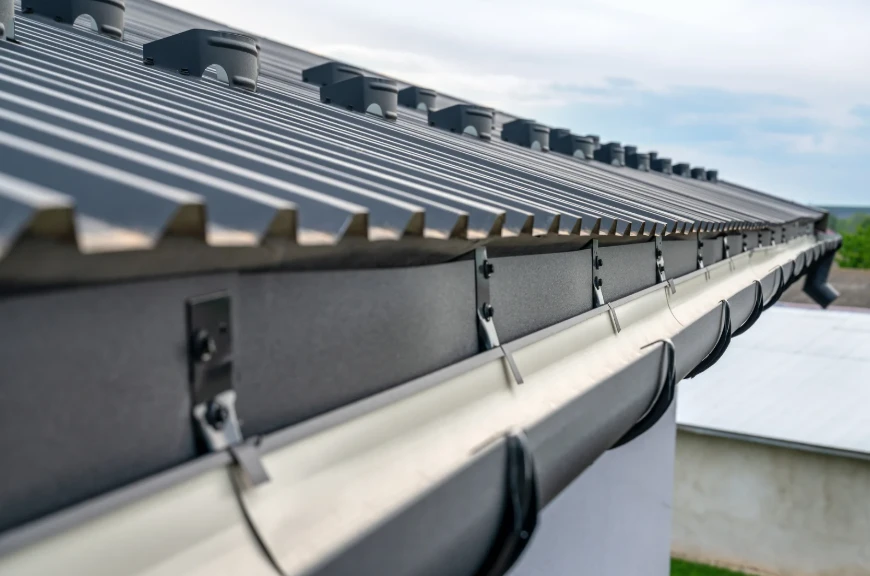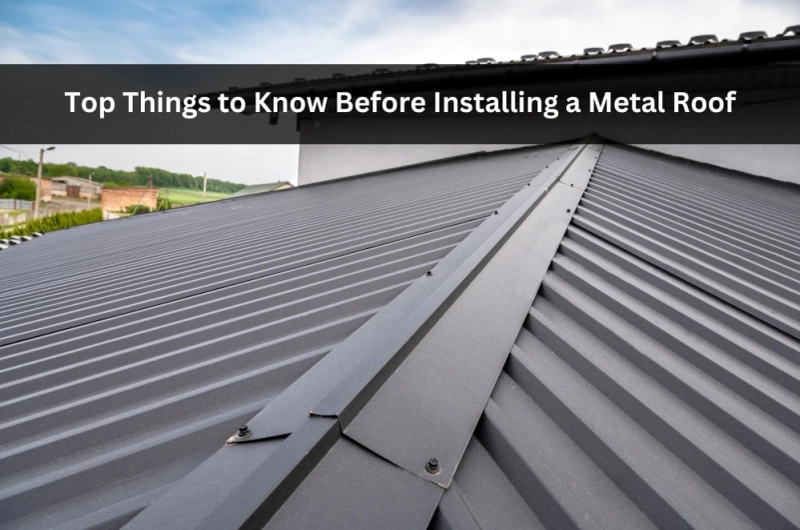If you’re like most homeowners, the idea of replacing your roof probably doesn’t top your weekend plans. It’s not glamorous. It’s not quick. But it matters. More than people realise. And if you’re thinking about upgrading to a metal roof, there are a few things you’ll want to know before the first sheet even touches the battens.
Not long ago, I worked on a weatherboard in a rural town where the roof had seen better days. The owner was set on going metal — sleek, strong, fuss-free. But no one had warned her about the prep work. Flashings were rusted out. Sarking had gaps. And the roof pitch needed adjusting to meet load standards. The job took longer, but we got it right. That house now handles storms like a champ. Planning a metal roofing installation is less about surface looks and more about how your roof system supports long-term function. Here’s what to think through before lifting a single sheet.
Not all metal roofs are built the same
There’s more to a metal roof than the colour you pick or the shape of the sheets. That part — the visual — is what most people notice first. But performance? That lives in the layers underneath, and the material you choose. And materials aren’t all built equal.
Where you live can change everything. Coastal? You’ll want something that holds up against salt. Inland with temperature swings? Thermal expansion can be a bigger issue than people expect.
Here’s how different materials tend to behave:
- Colorbond is made for Australian conditions. It reflects heat and resists corrosion.
- Zincalume handles salt spray well, ideal for seaside homes.
- Galvanised steel is widely used but may need more maintenance in the long run.
- Aluminium and copper? Pricey, but long-lasting if looks matter just as much as longevity.
And that’s not even touching on roof profiles, fixing systems, or gutter compatibility — all of which play a role in how well your roof works day to day.
Site safety and working conditions matter
From the ground, roofing can seem simple. Climb up, lay the sheets, bolt it down. But if you’ve ever stood on a half-pitched roof in 30-degree heat with gusty wind threatening to lift your tools off the ridge, you’ll know — roofing is dangerous work, even more so when it’s not done by people trained for it.
Too many homeowners skip this part of the conversation. They focus on the roof colour or style, but not the conditions required to safely install it.
Ensuring your project follows safe roof work practices means minimising risks to workers and residents during construction. Whether you're doing a full replacement or a partial upgrade, don't underestimate how much proper safety compliance shapes the timeline and workflow.
One small slip, a tool left unsecured, or forgetting edge protection? It’s more than a delay — it’s a risk no one wants to see play out. Roofing should be methodical, not rushed.
Ventilation and heat performance go hand-in-hand
Summer under a metal roof? You’ll notice fast if your insulation and ventilation weren’t done right. I’ve worked in homes where the ceiling felt like a slow cooker from noon to night — all because heat had nowhere to go.
It’s not just about what’s visible. Most of the heat management happens where you don’t see — under the sheeting, between rafters, and through passive airflow paths. If you ignore that? The roof still looks great. But living under it won’t feel great.
Some practical cooling strategies for metal roofing include:
- Adding foil-backed insulation blankets under the sheets
- Using vented ridge caps to allow heat to escape
- Installing breathable sarking to prevent moisture buildup
- Creating adequate eaves and soffit airflow
Each of these works best when it’s part of a plan, not bolted on at the end. The difference in internal temperatures can be massive.
Material lifespan and upkeep aren’t automatic
Metal roofs have a solid rep — and rightly so. They’re strong. They resist pests. They hold up well under hail. But that doesn’t mean you can ignore them once installed. Maintenance may be low, but it isn’t zero.
I’ve lost count of how many times I’ve climbed onto a roof to find clogged valleys, leaf buildup in gutters, or loose fasteners left unchecked. These might seem small, but over time, they wear your system down. That’s how leaks start or rust sets in, where water pools.
You’ll want to:
- Clear debris and branches from valleys and gutters
- Inspect fasteners and flashings after high winds or heavy rain
- Look for paint bubbling or discolouration that may indicate corrosion
- Ensure tree limbs don’t scrape or drop onto the roof during storms
Just 20 minutes every few months can extend the life of your roof more than most realise. Prevention always beats patching.

Don't rush material choice or installation timeline
Here’s something homeowners don’t hear enough: not every roofer uses the same methods, and not every supplier delivers to the same standard. That includes sheet gauge (thickness), paint system, and even screw types. Rush decisions, and you risk ending up with materials that underperform or installers who cut corners.
I once inspected a house where the wrong profile was used for the roof pitch. Water couldn’t drain fast enough, so it pooled at the laps — rust formed within a year. That job had to be stripped and redone. It all came down to poor planning at the start.
Final thoughts
No matter how you approach it, switching to a metal roof is a decision that’ll shape your home for decades. And while the benefits are clear — long life, bushfire resistance, and a modern look — getting the details right is what turns a good install into a great one.
If you’re still on the fence, small upgrades like natural roof ventilation ideas can offer major benefits with minimal fuss. The goal isn’t perfection — it’s choosing what works for your climate, home layout, and long-term comfort.
The bottom line? Plan properly. Ask real questions. Look beyond the surface. That’s how you make sure your new roof doesn’t just look good — it lives up to everything you’re expecting.


